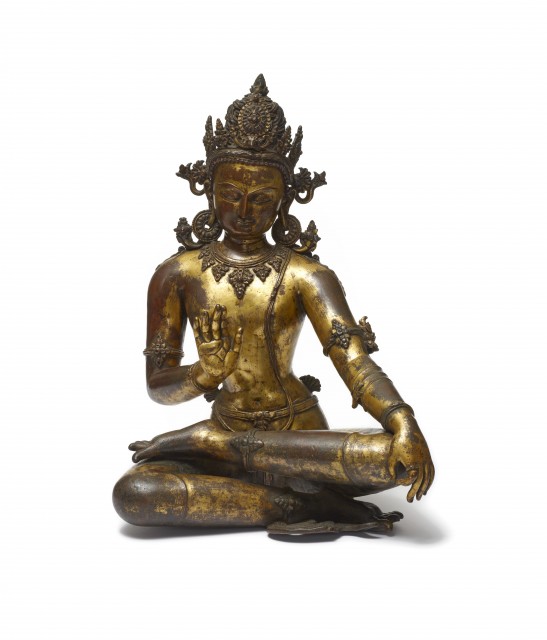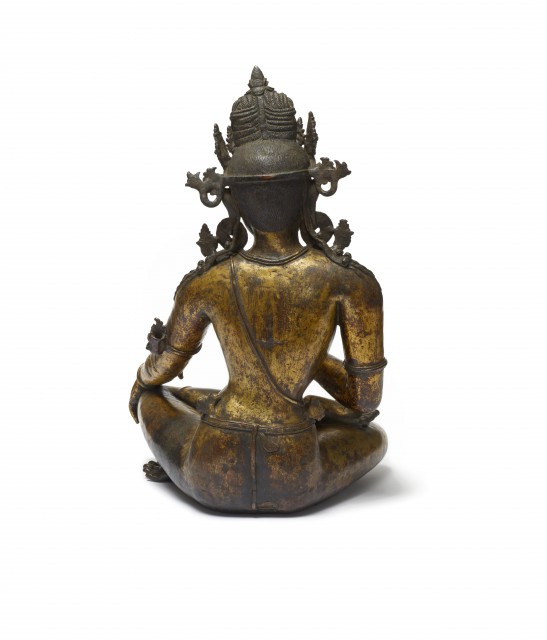Seated Bodhisattva

Photography by Synthescape, Digital image © Asia Society

Photography by Synthescape, Digital image © Asia Society
Seated Bodhisattva
13th century
Nepal
Gilt copper with inlays of semiprecious stones
H. 18 3/4 x W. 12 1/4 x D. 10 in. (47.6 x 31.1 x 25.4 cm)
Asia Society, New York: Mr. and Mrs. John D. Rockefeller 3rd Collection, 1979.49
Provenance
John D. Rockefeller 3rd, New York, NY; acquired from J. J. Klejman, New York, NY, September 26, 1966.
The Asia Society, New York, NY, bequest of John D. Rockefeller 3rd, New York, NY, 1979.
on view Licensing inquiries
This Bodhisattva, seated in a relaxed posture, makes the gesture of reassurance with his right hand and the gesture of teaching with his left. Originally, all the depressions in his jewelry and crown would have been filled with multicolored stones. It is unclear exactly which bodhisattva this sculpture represents as it holds no attributes nor does it have an identifying image in its headdress. However, the antelope skin draped over the bodhisattva's left arm suggests that this sculpture represents Avalokiteshvara, the Bodhisattva of Compassion, as an antelope skin is sometimes draped over Avalokiteshvara's shoulder, as on another work in the Asia Society Collection. Another clue to an identification as Avalokiteshvara is the flowered decoration coming off his left armband, which is a hollow tube. The presence of this tube suggests that the bodhisattva once held a lotus, one of Avalokiteshvara's typical attributes. The lotus would have been held in his left hand, with the stem running up the arm and through the tube, a common position for the lotus in Buddhist sculpture.


